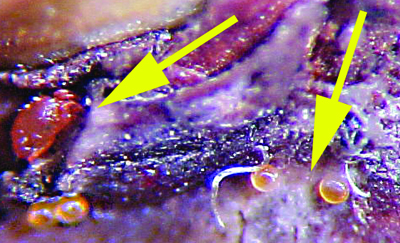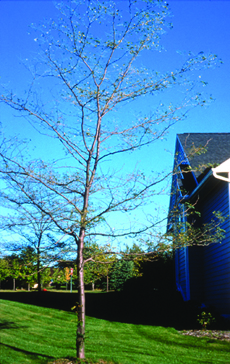Honeylocust mite
July 30, 2015
Eotetranychus multidigituli
This mite’s only host is honeylocust. It overwinters as a red, adult female in bark crevices, twigs and bud scales. There are multiple generations per year. Egg laying begins early in the season, around mid-April as Cornelian cherry blooms. Eggs are deposited near developing buds. Nymphs start out pale yellow and darken to green as they develop.

Female adult (left arrow) and eggs laid at base of honeylocust leaf bud (right arrow).
Symptoms of injury include yellowing and stippling of leaves and early defoliation of leaflets in July and August. Use a hand lens to look for mites on undersides of leaflets, or shake branches over a white sheet of paper. The size of the mites is less than 0.3 mm.
Management
Treat overwintering mites before egg laying begins. Adults and nymphs are vulnerable to many miticides, including soaps and oils. Check mite populations in mid-summer and treat if needed. Trees usually survive late season defoliation.

Defoliated tree in late summer.
Print a PDF of this page: Honey Locust Mite



 Print
Print Email
Email



